
To date, the battle of Kursk in July 1943 remains the single largest tank battle in history. The titanic struggle between the The Germans and the Soviets in the steppes of Russia involved 6000 tanks slugging it out at extremely close quarters, even colliding sometimes. The climactic action between the SS Panzer formations against the Soviet 5th Guards Army at Pokhrovka Gully was a tank apocalypse of sorts. Although much was mentioned of the Tigers and Panthers used by the Germans, more than half of the tanks fielded by them were actually the Pzkfw Mk. IV. For the Soviets, about half of the armor deployed were the famous T-34/76. That these two tanks would meet this way at close quarters on the battlefield was a certainty. One was from a Soviet Guards tank regiment, the other from the SS Liebstandarte Adolf Hitler Panzer regiment.
I purposely placed the two tanks almost colliding at a dry creek bed (it was an extremely hot summer that year) to highlight the nature of the combat, close, intense, and very deadly. It came down to the resilience of the vehicle and crew, skill in swinging that gun round to get the first shot, and lots of luck as well. In this diorama, both tanks have almost the same chance to get that shot off, so who survives?
Gallery

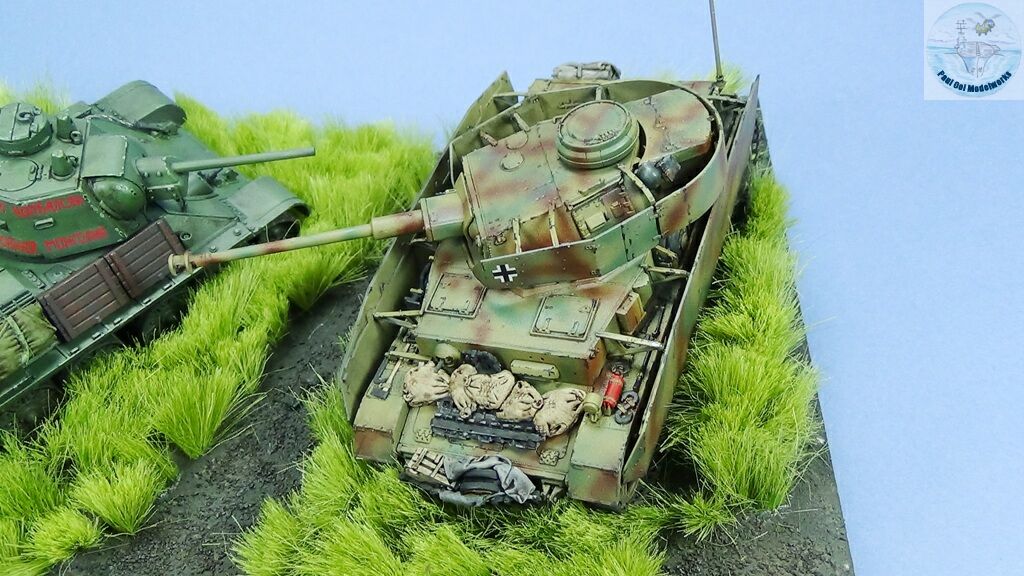







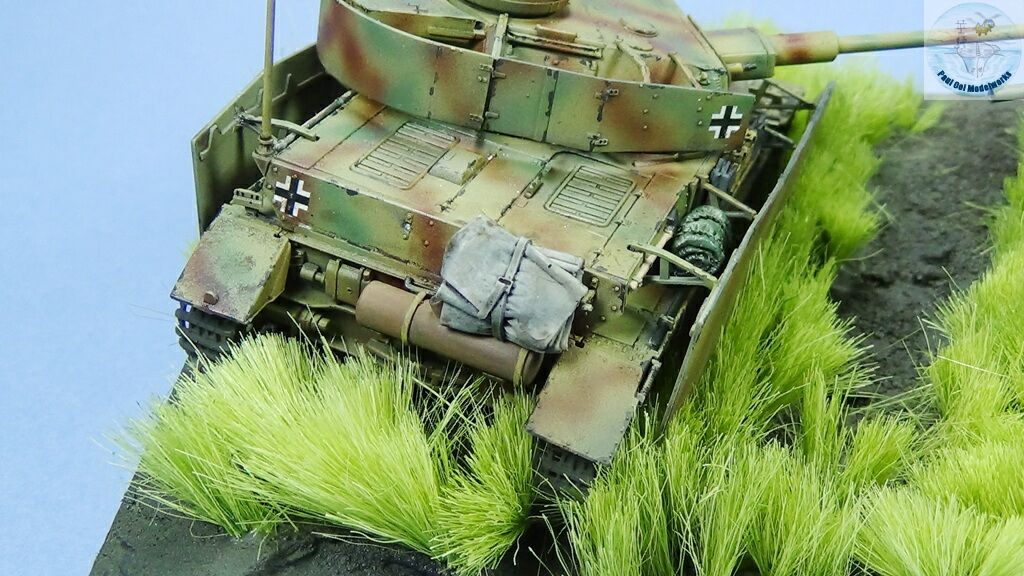
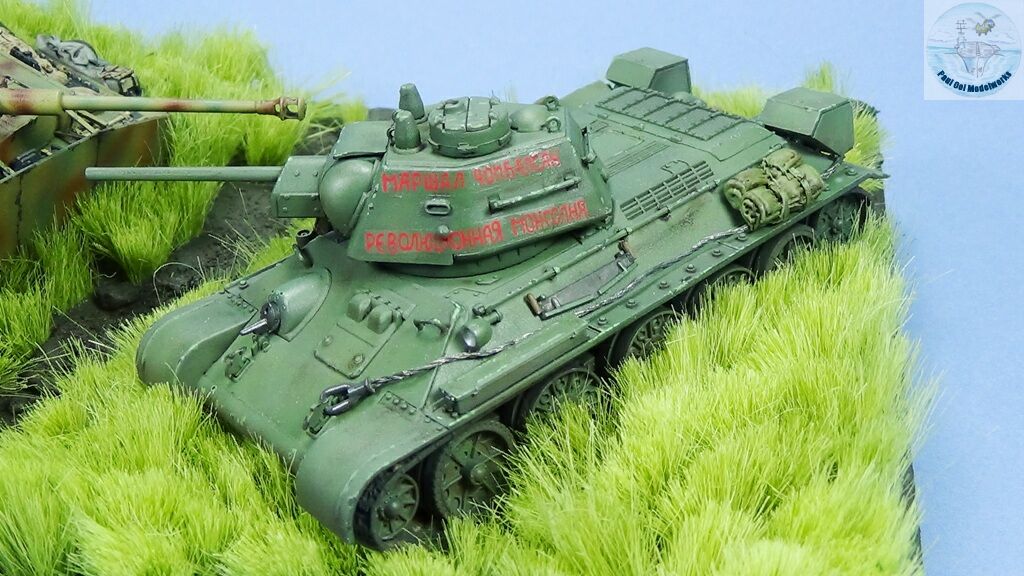



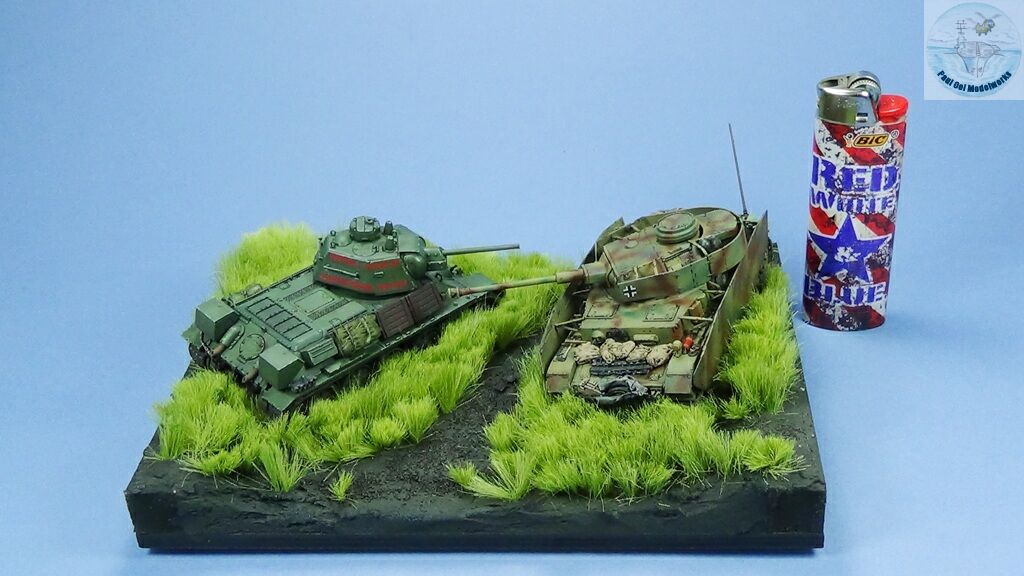
Construction Notes

 These two famous tanks have no shortage of model kit representations in 1/72, and I chose the Dragon ones as they provided fantastic details and generally good fit. The parts of well-engineered (maybe a little over-engineered for the Mk. IV) and for the T-34 kit, included a phot-etched fret, and metal cable for the tow line. The one thing to be aware of is that the Dragon tracks should only be painted using acrylic paint, not enamel or lacquer as those will dissolve them! Also, this was the first time I built both tanks side-by-side instead of one-after-the-other. This allows me to get the same weathering effects on both in the same environment.
These two famous tanks have no shortage of model kit representations in 1/72, and I chose the Dragon ones as they provided fantastic details and generally good fit. The parts of well-engineered (maybe a little over-engineered for the Mk. IV) and for the T-34 kit, included a phot-etched fret, and metal cable for the tow line. The one thing to be aware of is that the Dragon tracks should only be painted using acrylic paint, not enamel or lacquer as those will dissolve them! Also, this was the first time I built both tanks side-by-side instead of one-after-the-other. This allows me to get the same weathering effects on both in the same environment.
 The Mk. IV main hull did require some clamping to get the upper hull properly pressed onto the chassis tub.
The Mk. IV main hull did require some clamping to get the upper hull properly pressed onto the chassis tub.

 The other thing to be aware of with the Mk. IV is the alignment of the struts to hold the schurzen skirts for the turret and hull. Since I will need to paint both the main hull and schurzen plate layers separately, the struts have to be in the correct spacing and attitude. I used a divider to check the spacing of the strut tips to the attachment points before the glue sets. These are extremely fragile, so watch the handling.
The other thing to be aware of with the Mk. IV is the alignment of the struts to hold the schurzen skirts for the turret and hull. Since I will need to paint both the main hull and schurzen plate layers separately, the struts have to be in the correct spacing and attitude. I used a divider to check the spacing of the strut tips to the attachment points before the glue sets. These are extremely fragile, so watch the handling.
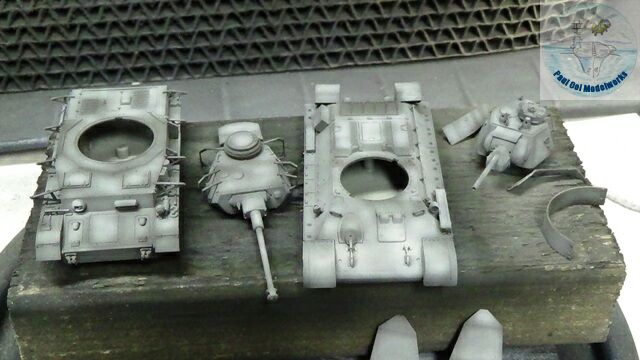 Both tanks get the Tamiya NATO Black and Sky Grey priming and under-shading treatment before the main colors go on.
Both tanks get the Tamiya NATO Black and Sky Grey priming and under-shading treatment before the main colors go on.

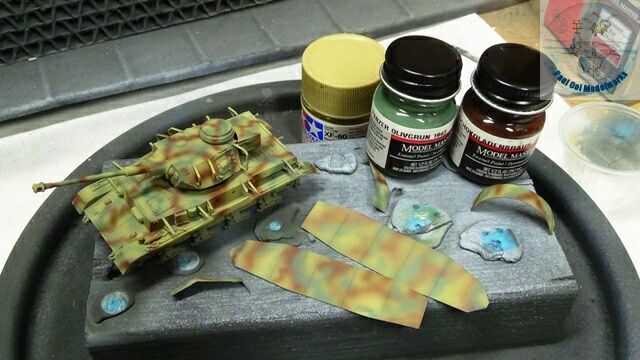 The German Mk. IV gets the 3-toned camouflage used by the LSAH regiment in Kursk, starting with overall Dunkelgelb (Tamiya Dark Yellow XF60) followed by 1943 Panzer Schokoladen Braun, then 1943 Panzer Olivgrun, both Model Master enamels (sadly no longer available). These are much more accurate than the Tamiya or Mr. Color guide colors.
The German Mk. IV gets the 3-toned camouflage used by the LSAH regiment in Kursk, starting with overall Dunkelgelb (Tamiya Dark Yellow XF60) followed by 1943 Panzer Schokoladen Braun, then 1943 Panzer Olivgrun, both Model Master enamels (sadly no longer available). These are much more accurate than the Tamiya or Mr. Color guide colors.
 The T-34 gets a straight forward Russian Armor Green from Model Master. I thinned it sufficiently for the prime coat to show the highlights and shading.
The T-34 gets a straight forward Russian Armor Green from Model Master. I thinned it sufficiently for the prime coat to show the highlights and shading.
 Decaling was a straight forward affair but the T-34’s decal was a little bit thicker and I had some silvering problems despite having used Micro Gloss preparatory layer.
Decaling was a straight forward affair but the T-34’s decal was a little bit thicker and I had some silvering problems despite having used Micro Gloss preparatory layer.
 Weathering for the Mk.IV was chipping using Tamiya NATO Black with a fine point brush.
Weathering for the Mk.IV was chipping using Tamiya NATO Black with a fine point brush.
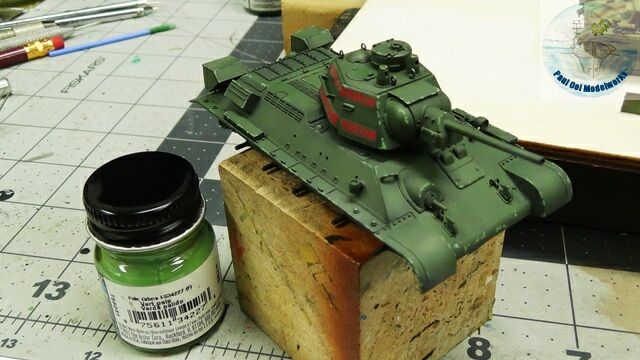
For the T-34, it was a 2-stepped process , first using Model Master Pale Green acrylic FS34227, then Tamiya NATO Black. After chip-weathering, I applied my usual oil wash of 1:1 Burnt Umber : Lamp Black on both tanks.
 The road wheels and single piece-track are applied for the T-34. The track is a little undersized and getting it to fit onto the sprocket and follower was extremely challenging. I ended up attaching the sprockets with brass rods to prevent breakage of the joints.
The road wheels and single piece-track are applied for the T-34. The track is a little undersized and getting it to fit onto the sprocket and follower was extremely challenging. I ended up attaching the sprockets with brass rods to prevent breakage of the joints.
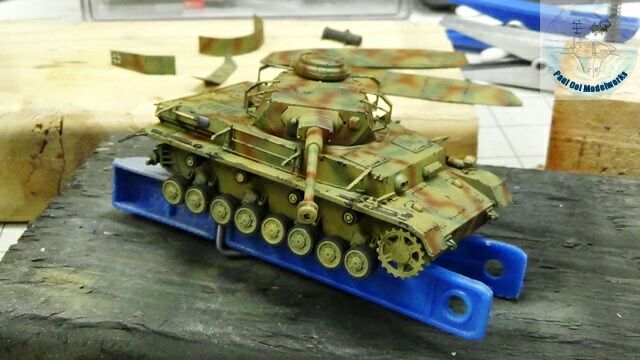
 As for the Mk IV, the track application was better as I left off the top followers first, allowing enough slack to fit the 1-piece track without breaking the attachment points. Once the track is safely on, I add in the top followers one at a time.
As for the Mk IV, the track application was better as I left off the top followers first, allowing enough slack to fit the 1-piece track without breaking the attachment points. Once the track is safely on, I add in the top followers one at a time.
 The tricky part for the Mk. IV was the attachment of the schurzen side skirts. Because I had already spaced out the struts prior, I did not have much problems getting them to sit right. Without proper spacing, this step could easily have become a nightmare, happily avoided!
The tricky part for the Mk. IV was the attachment of the schurzen side skirts. Because I had already spaced out the struts prior, I did not have much problems getting them to sit right. Without proper spacing, this step could easily have become a nightmare, happily avoided!
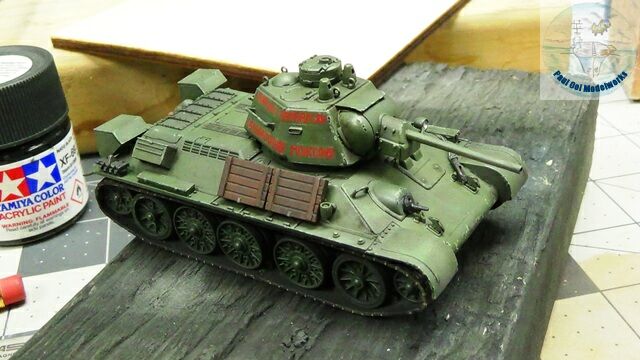
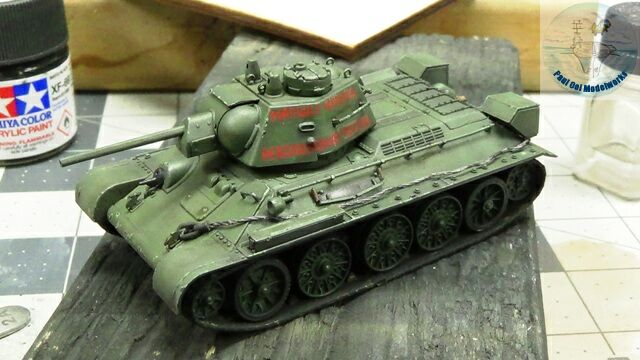 The T-34 had a most austere exterior, with the metal wire cable line presenting the “stubborn attachment that would not sit right” challenge. Using superglue, I finally did get it to look right on the hull.
The T-34 had a most austere exterior, with the metal wire cable line presenting the “stubborn attachment that would not sit right” challenge. Using superglue, I finally did get it to look right on the hull.
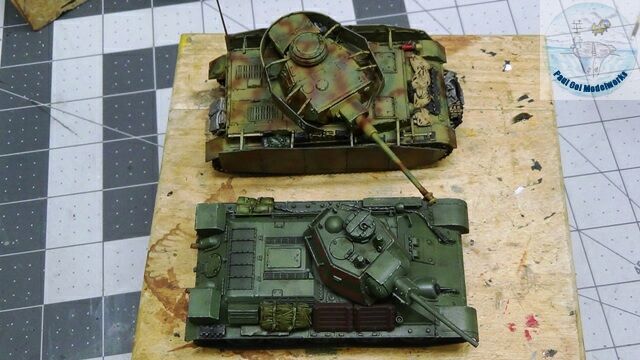 Notice how similar in size these 2 medium tanks are! However, the Mk. IV’s pre-sloped armor design contrasts greatly with the clean sloped lines of the T-34. The schurzen attachment on the German tank certainly looked a lot more busy than its Soviet rival.
Notice how similar in size these 2 medium tanks are! However, the Mk. IV’s pre-sloped armor design contrasts greatly with the clean sloped lines of the T-34. The schurzen attachment on the German tank certainly looked a lot more busy than its Soviet rival.

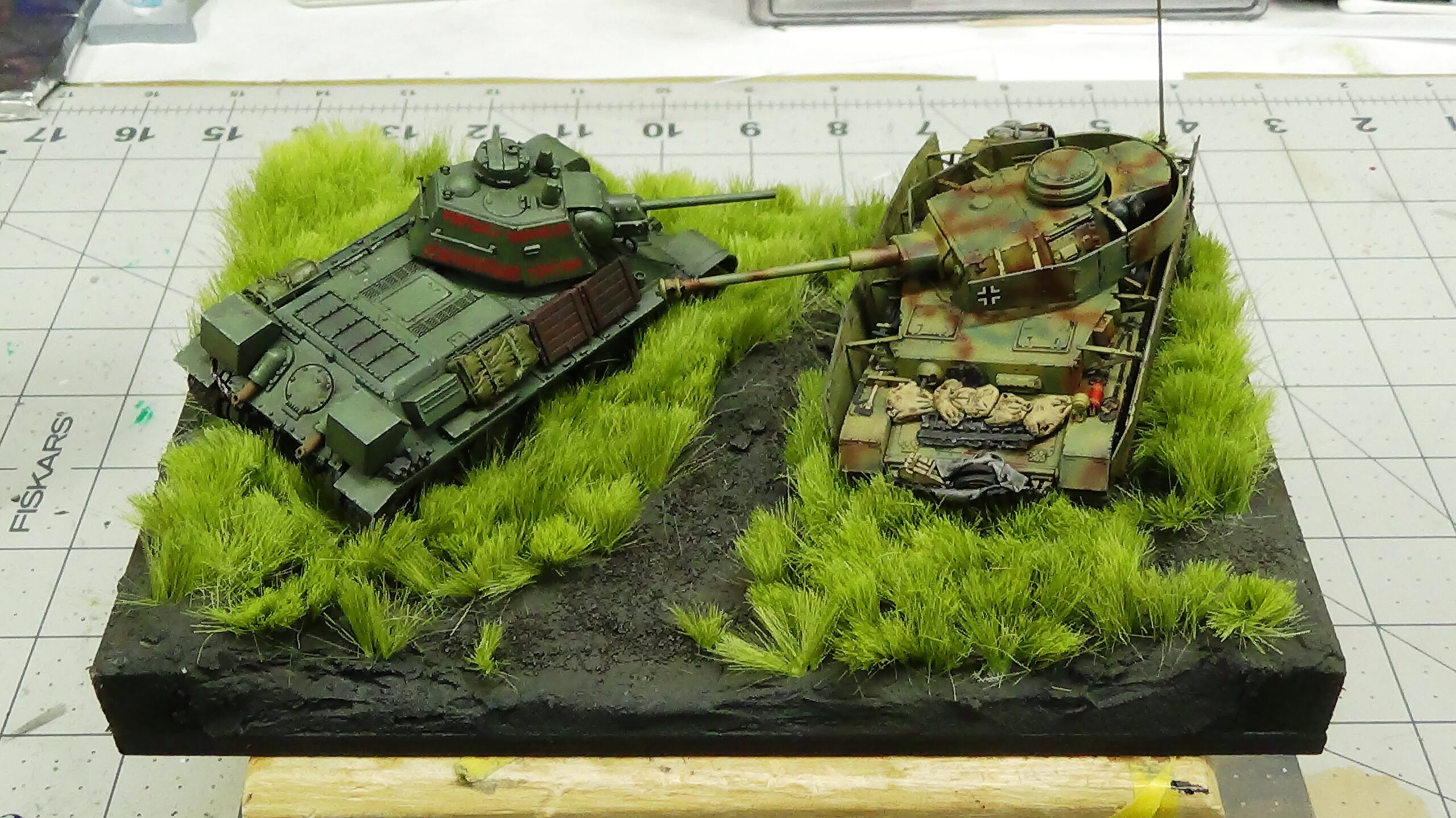
I positioned the two tanks to do a final check before “planting” the long steppe grass around these two combatants. Planting is an arduous, slow process but well worth the effort as it conveys the terrain and sense of motion .

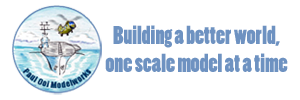
Leave a Reply